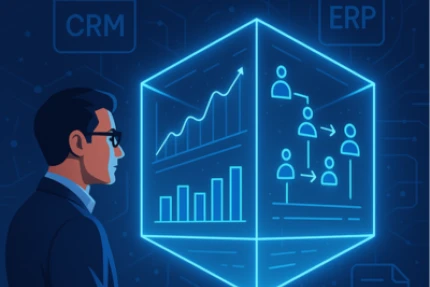
Product Performance by ICP
Not all products are created equal. Two products might show the same topline numbers—but one could be thriving with long-term customers from a sticky vertical, while the other is quietly churning through low-value accounts.
This type of nuance is often not reflected in traditional dashboards or manual spreadsheets. And when you can’t see what’s really driving performance, or where the white space opportunities are, it’s hard to double down on what’s working—or course-correct before issues blow up.
Integrating Pipeline Attribution into Your Marketing Strategy
Most B2B SaaS companies already track product performance. But it’s usually at a high-level: ARR, retention (GRR, NRR), maybe a customer count by product. What’s often missing is the context—who’s buying, what segment they fall into, how that’s changed over time, and where the risks and opportunities actually live.
With the right analytics, you can:
- Identify your most successful product-segment pairings
- Cross sell into ICPs that are performing well but underpenetrated
- Track retention and revenue trends across verticals and company size
- Spot underperforming segments before they turn into churn
- Support roadmap decisions with real usage and revenue data
- Forecast more accurately with historical patterns by segment
That kind of insight doesn’t just help product teams. It shapes GTM strategy, revenue planning, and customer success priorities.
A Faster Way to See What’s Working
Discern’s Product Analysis dashboard is built to give this clarity—without hours in spreadsheets or cross-referencing systems. It pulls in key metrics like:
- Product Annual Recurring Revenue (ARR)
- Average Revenue Per Customer by Product
- Gross and Net Revenue Retention by Product
- Customer count by Product
- All sliceable by ICP, i.e. vertical, company size, role, and more
You can view trends by quarter, compare segment performance side-by-side, and dive into customer-level details like accounts, subscriptions, starting/ending MRR, health scores—all in one place.
What This Unlocks for Your Team
For RevOps: You get visibility into what’s really driving expansion and where the risks are hiding. Leverage this information to develop a targeted sales strategy.
For Product: You see which products are sticky, which features are landing, and where adoption stalls. Apply this information to shape your product strategy.
For Finance: You get clean metrics, historical views, and defensible forecasts that hold up in boardrooms.
In short, it’s not just about product analytics. It’s about aligning your entire go-to-market engine around what’s actually happening in your customer base.
Why It’s Useful Now
As companies shift from growth-at-all-costs to efficient, durable growth, knowing which products and segments drive real value is more important than ever. Blanket strategies won’t cut it. Precision matters. And this kind of segment-level analysis helps companies operate with that precision—on product, on customer success, and on revenue.
Because when you can see the full picture, you can move faster and act smarter.



